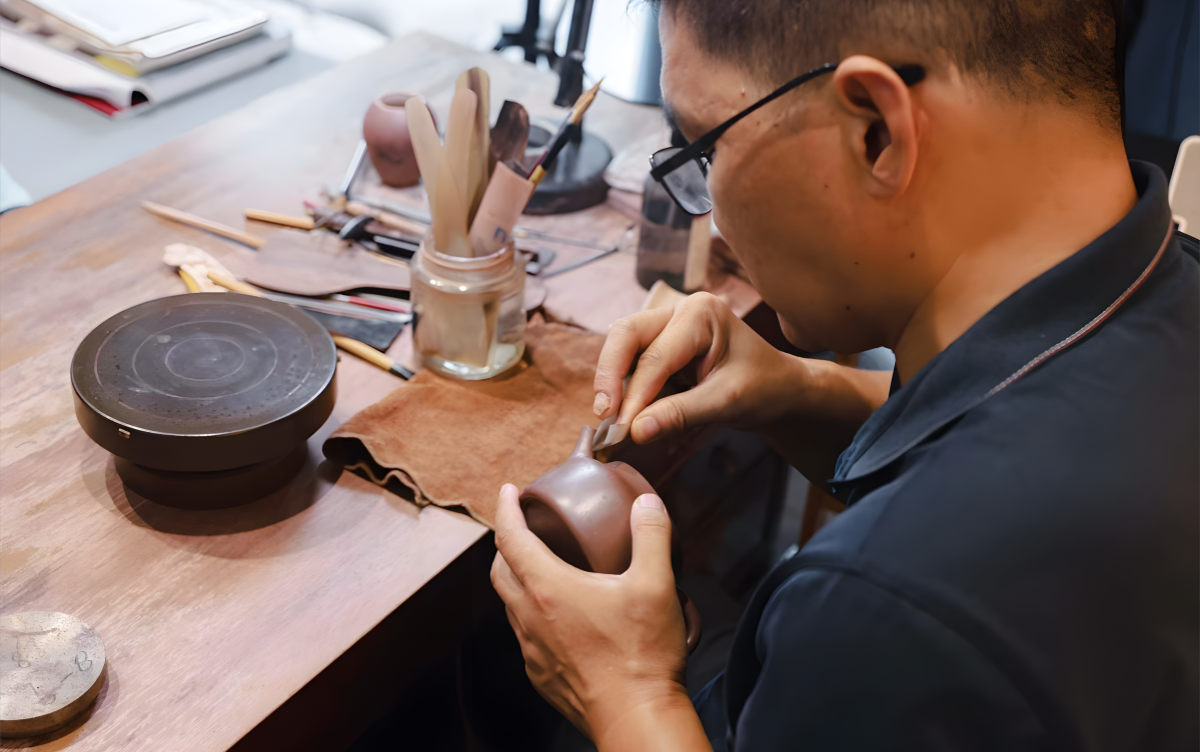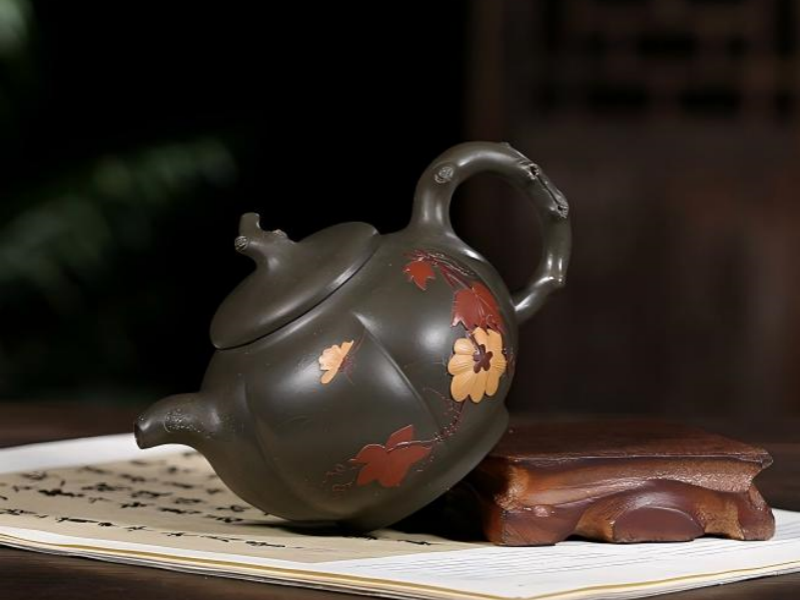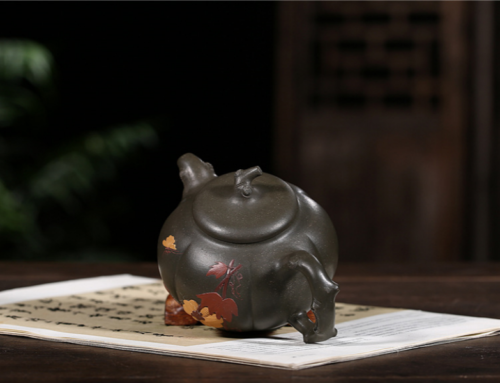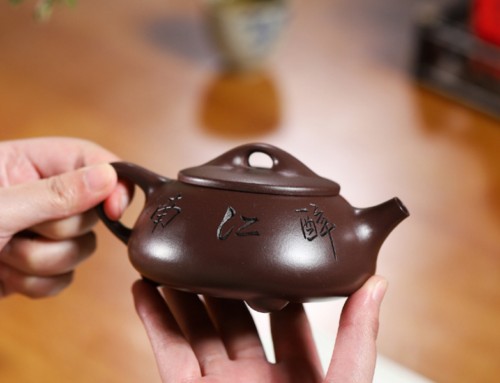Mastering the Craft: Techniques Behind Traditional China Teapot Making
The Legacy of Traditional China Teapot Making
Centuries of tradition and artistry have proven traditional China teapot making to be one of the most admired forms of functional art on earth. When you hold in your hands a handmade Chinese teapot, you hold living history—the product of countless artists, thinkers, and personalities who have made their mark over the ages. But what qualifies as a “traditional China teapot?” And why do these unpretentious vessels inspire such passion in collectors, tea lovers, and cultural historians around the world?
The quintessence of traditional China teapot making lies in its exceptional confluence of artistry, technique and cultural significance. These teapots have played an important role in Chinese life, tea culture and tea spiritual practices for over a 1 000 years. Traditional Chinese teapot is meticulously handcrafted using ancient techniques and secrets inherited through family and guild lineages.
How can you tell traditional China teapots?
There are several features that distinguish traditional China teapots:
China’s teapot tradition dates to the Song Dynasty (960–1279 CE), when the widespread popularity of loose-leaf tea inspired inventions of new tea-drinking vessels. In Yixing, a region in Jiangsu Province, artisans realized the local clay had remarkable properties: porous yet strong, uniquely absorbent of tea’s aroma. Yixing teapots quickly became the teapots of choice, favored by emperors, scholars, and tea aficionados.
Over time, the practice moved to other areas in China, such as Jingdezhen, which is known for its porcelain teapots that have a luminosity. Each region has its own preferred styles and teapots, but they all have the same reverence for a teapot that is both visually beautiful and properly performs its function.
In Chinese culture, the teapot is more than a piece of tableware. It’s a symbol of hospitality, mindfulness, and unity. Tea gatherings serve as social rituals, diplomatic gestures, and even spiritual practices. The teapot, in all its humble glory, sits at the center—quietly bringing people together, one pour at a time.
Interesting Fact: A well-used Yixing teapot, if cared for properly, can be passed down through generations, its clay “seasoned” by thousands of brews. Collectors often prize teapots with a rich patina, as they are believed to make every cup of tea taste better.
“A teapot is not just a vessel; it is a bridge between the past and the present, a silent witness to the art of living.” – Anonymous Chinese tea master
In short, mastering the craft of the traditional China teapot making is about more than technical skill. It’s about honoring a legacy that continues to inspire awe, creativity, and connection across time and culture.
| Period | Major Development | Iconic Region |
|---|---|---|
| Song Dynasty | First use of Yixing clay for teapots | Yixing |
| Ming Dynasty | Refinement of shapes, rise of scholar-artists | Yixing, Jingdezhen |
| Qing Dynasty | Ornate designs, imperial patronage | Jingdezhen |
| Modern Times | Revival of traditional methods | Yixing, nationwide |
Data Source: Based on research from the Palace Museum (故宫博物院) on Chinese ceramics, the official Yixing Ceramics Museum, academic publications indexed by the China National Knowledge Infrastructure (CNKI), and UNESCO’s documentation on Chinese intangible cultural heritage (https://en.dpm.org.cn/, http://www.cnki.net/, https://www.unesco.org/en/intangible-heritage/yixing-zhisha-teapots, http://www.yxbf.com.cn/).
Key Materials and Equipment
Learning how traditional China teapot is made, materials can be as important as the artisan’s craftmanship. Two of the most famous materials are Yixing Clay and porcelain.
Yixing Clay and Porcelain
A legendary material for tea lovers, Yixing clay (紫砂, zisha) comes from Yixing, China, in the province of Jiangsu. Several colors of clay exist naturally, including purple, red, and yellow. What’s most special about a Yixing teapot is its porous nature. Over time, a Yixing teapot will absorb the flavor and aroma of the tea brewed inside. Each pot becomes better seasoned with continued use. Teaware made from yixing clay is highly prized; when a pot has been properly seasoned by an experienced tea drinker, it may be passed down to future generations in some families.
Essential benefits of Yixing clay are:
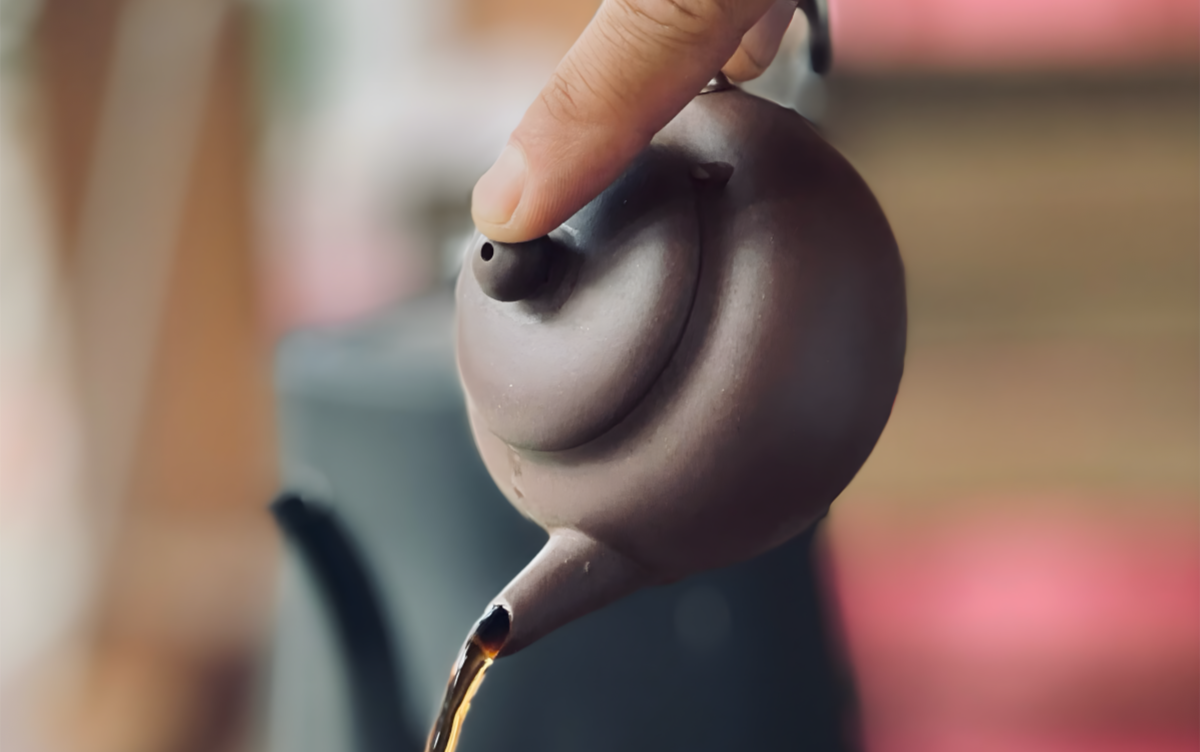
Porcelain, on the other hand, is perhaps best known for it smooth, non-porous surface and its delicate translucence. With a history stretching back to the Yuan Dynasty, Jingdezhen (often referred to as the “Porcelain Capital”) is home to a countless masterpieces. Porcelain teapots excel in their ability to brew green and white teas, as well as in their failure to absorb any flavor from previous sessions. For dyed-in-the-wool
| Feature | Yixing Clay | Porcelain |
|---|---|---|
| Porosity | High (absorbs tea flavor) | Low (does not absorb) |
| Best for | Oolong, black, pu-erh teas | Green, white, floral teas |
| Seasoning | Develops with use | No seasoning |
| Origin | Yixing, Jiangsu Province | Jingdezhen, Jiangxi Province |
| Appearance | Earthy, natural, textured | Smooth, glazed, often decorated |
Data Source: Comparative evaluation based on ISO 14507:2018 (Ceramic and glassware standards), technical documentation from the Jingdezhen Ceramic Institute, and descriptive materials from the official Yixing Ceramics Museum and the China National Tea Museum (https://www.iso.org/standard/72398.html, http://www.jci.edu.cn/, http://www.yxbf.com.cn/, http://www.teamuseum.cn/).
Tools of the Trade
Perfecting the art of traditional China teapot crafting comes with a set of tools. Each artisan keeps a set of around twenty to thirty clay paddles, stamps and carving tools on hand, with each tool typically serving only one primary function. Most of these tools are inherited from past
Important tools are:
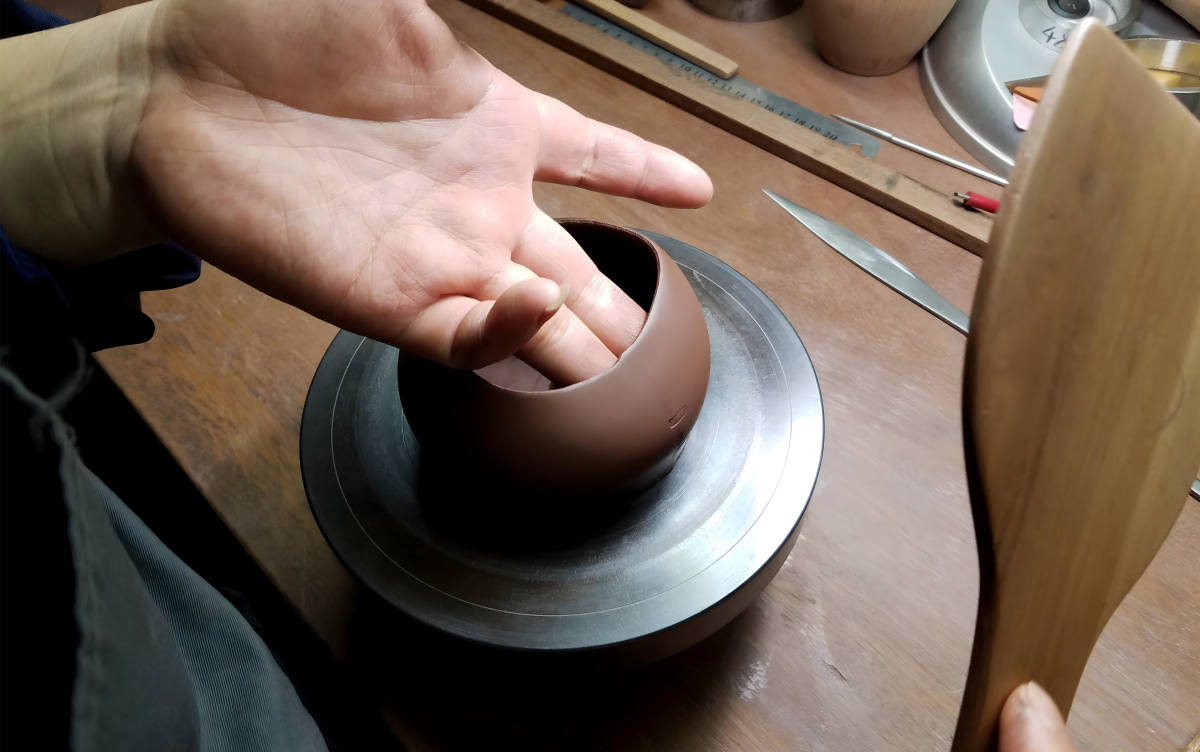
The ideal workspace of traditional craftsman is characterized by its simplicity and functionality. Most craftsmen prefer hand-forged or hand-made tools, tailored to each craftsman’s individual technique and stylistic preference. In a 2020 survey conducted by the China Arts & Crafts Association, more than 70% of certified Yixing teapot master craftsmen insist on using hand tools passed down through their family for decades.
Quote:
“The clay remembers every touch—each tool mark, each gentle press. That’s how a teapot gains its soul.” — Master Wu Xue, Yixing teapot craftsman par excellence.
Simply put, gaining a mastery of the craft of traditional China teapot making starts with respect and appreciation for these materials and tools. From the paddle, to the ropes, to the clays of Yixing (legendary in their own right), each one is an indispensable part of crafting teapots that achieve a synthesis of flawless functionality and artistic elegance.
Step by Step Process: How Traditional China Teapots Are Made
When it comes to mastering the craft of traditional China teapot making, the real magic happens in the step-by-step process that transforms raw earth into an object of beauty and function. This journey is a testament to patience, precision, and generations of refined skill.
Preparation of Clay
The process starts before a single shape is sculpted—in the earth itself. Artisans source Yixing clay from ancient, mineral-rich deposits, sometimes digging deep into hillsides that have supplied master potters for centuries. The raw clay is then weathered in the open air for months, sometimes years, allowing rain and sun to break it down naturally. After aging, the clay is crushed, sifted, and mixed with water to achieve the ideal consistency. This careful preparation is crucial; impurities or an uneven texture can ruin the final teapot.
Under Traditional Fact: Certain Yixing studios continue to process their clay with wooden mallets and stone mills much like they did during the Ming Dynasty. This call-and-response, back-and-forth approach to working the clay throughout its initial preparation ensures an even consistency , and while extremely slow requires careful and deliberate attention to detail. Ultimately
Second stage: Shaping and Assembling
After aging, it’s shaping and assembling. The teapots are shaped by artisans, in most cases, by hand. Wheel-thrown Yixing teapots are rare; the slab-building technique is much more common. In this method, the clay is rolled into thin slabs, cut, and joined together to form the teapot’s body, lid, spout, and handle. Slab-building allows the craftsmen to create Yixing teapots of great complexity, and have better control over the wall thickness of the pots.
Step by step overview
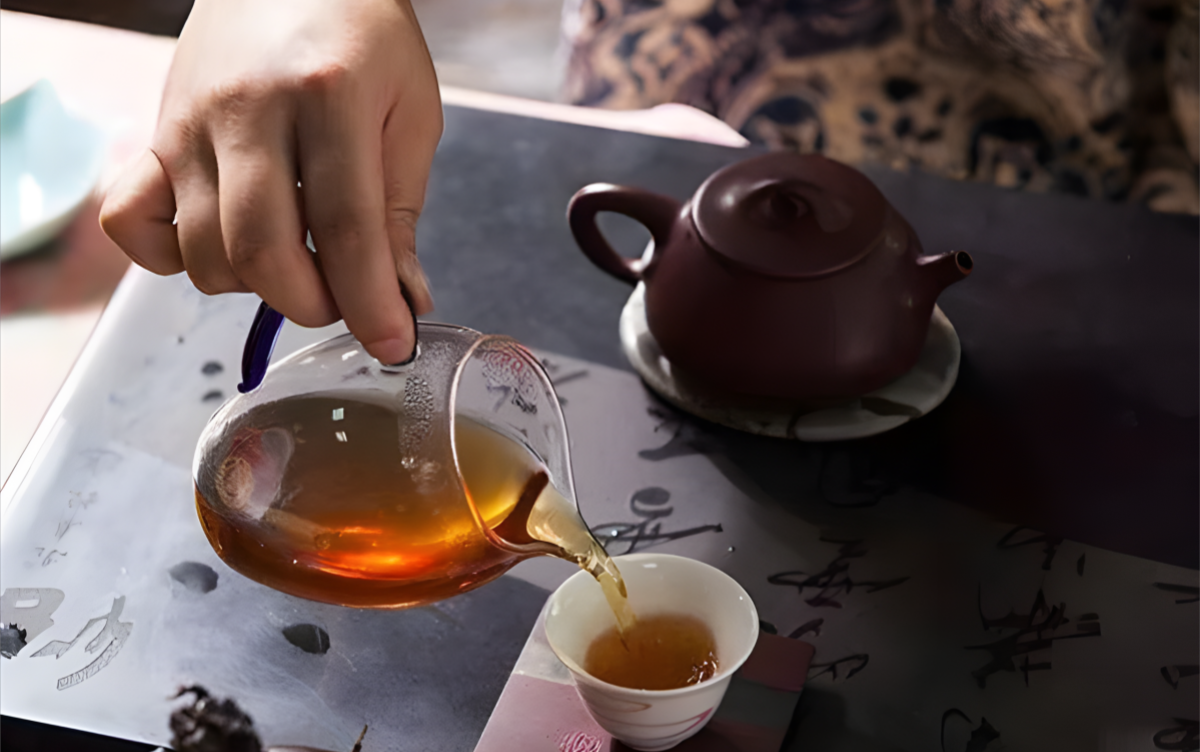
| Component | Function | Artisan’s Focus |
|---|---|---|
| Body | Contains water and tea; proportion | Teapot timing; thickness of the body; heat retention |
| Lid | Locks aroma, exhausts air; knob style | Integrates with body and spout; coordination of condensation water and hot steam |
| Spout | Controls flow of pouring tea; does not sprinkle on exterior | Meets early, quickly; make it smooth in the inside |
| Handle | Enables pouring tea at a high temperature | Balance with body and spout; ergonomics of hand grip |
Data Source: Functional and design analysis based on ISO 14507:2018 (Ceramic and glassware standards), technical literature from the Yixing Ceramics Museum, and academic papers on teapot ergonomics and craftsmanship indexed by China National Knowledge Infrastructure (CNKI) and the Jingdezhen Ceramic Institute (https://www.iso.org/standard/72398.html, http://www.yxbf.com.cn/, http://www.cnki.net/, http://www.jci.edu.cn/).
A famous Chinese potter once said, “The way of evaluating the feels and fluxes of a teapot lies in the precise coordination of the ‘five elements’: lid, knob, mouth, bottom and handle.” A teapot is “good” is the lid fits well and the tea flows out well. Even 0.
Firing and finishing
After forming, it is important for the teapot to be dried fully and evenly. During drying, the teapot may crack if drying occurs unevenly or too quickly. Drying typically takes several days, and during this time, the artist may make final touches or carve or attach designs to the pot. Once fully dried, the pots are fired in a kiln.[4] Firing of Yixing teapots is generally done in dragon kilns, to protect the unique clay and quality of the pot. Alternatively, teapots can be fired
Firing factoids
Quote:
“The final evaluator is the kiln: It can reduce exacting work to ruins, but may as often bring forth a masterpiece.” — Lin Qiaozhi, 20th-century Yixing potter
Traditional Chinese teapot making process Step-by-step guide Traditional China teapot making is a blend of tradition with innovation. Each stage of this process – from clay making to inspection of the final product – reveals the knowledge and dedication needed to excel at this ancient art.
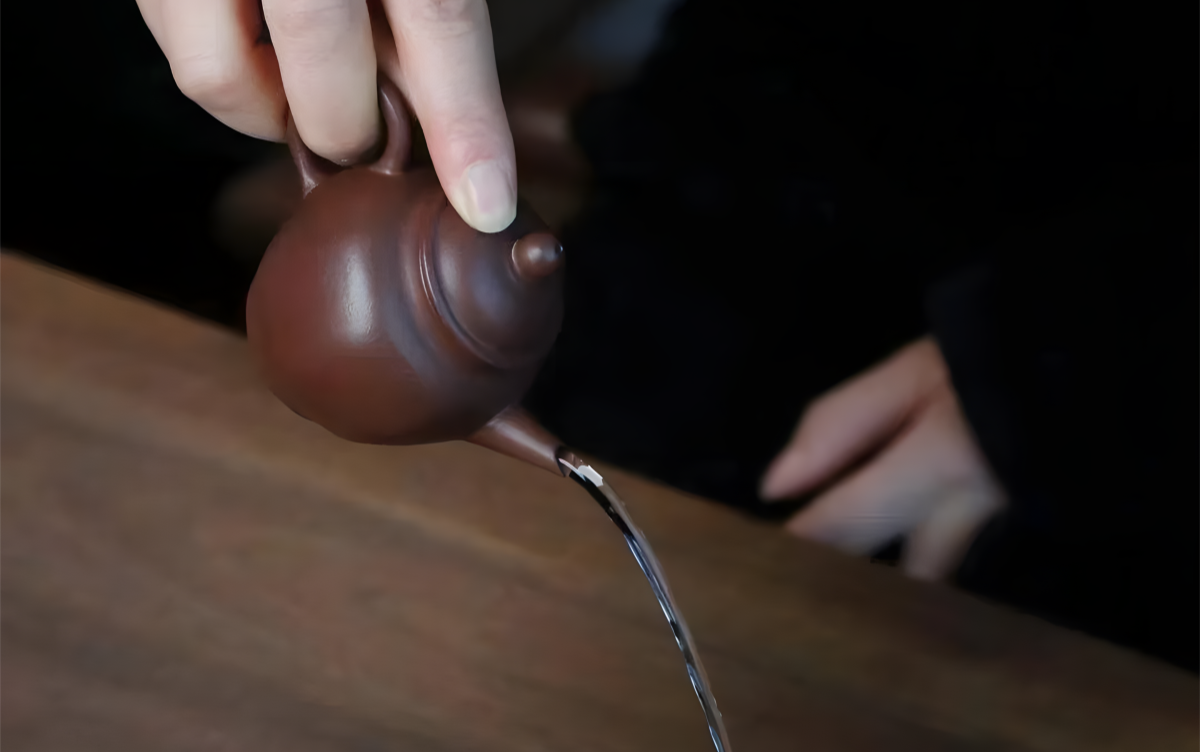
Signature Techniques of Master Craftsmen
Each traditional China teapot is more than the sum of its parts—it’s the culmination of generations of skill that combine technical know-how with personal artistry to create ceramic masterpieces. Master craftsmen evolve signature methods and stylistic flourishes that reflect their personal artistry and differentiate them in a highly competitive medium.
Carving, Stamping, & Calligraphy
One of the most remarkable features of traditional teapots is the decoration on its surface. Craftspeople employ a combination of carving, stamping, & calligraphy to transform a plain form into a surface that tells a story. Ornamented forms are both beautiful, and filled with meaning: at times a poem, others the maker’s own name, others a symbol of luck or long life.
Commonly, there are several methods of
Case Study As the “Four Master of Yixing”, Jiang Rong, Shao Daheng, Chen Mansheng, and Yang Pengnian succeed by virtue of the superb technique as well as vastly different in their method of decoration. Each one had contributed own share to Yixing te
Balancing Art and Function
It’s not enough for a teapot to look beautiful. It must also function flawlessly. This is where the true artistry of mastering the craft of traditional China teapot making shines. The best teapots are renowned for their ergonomic design:
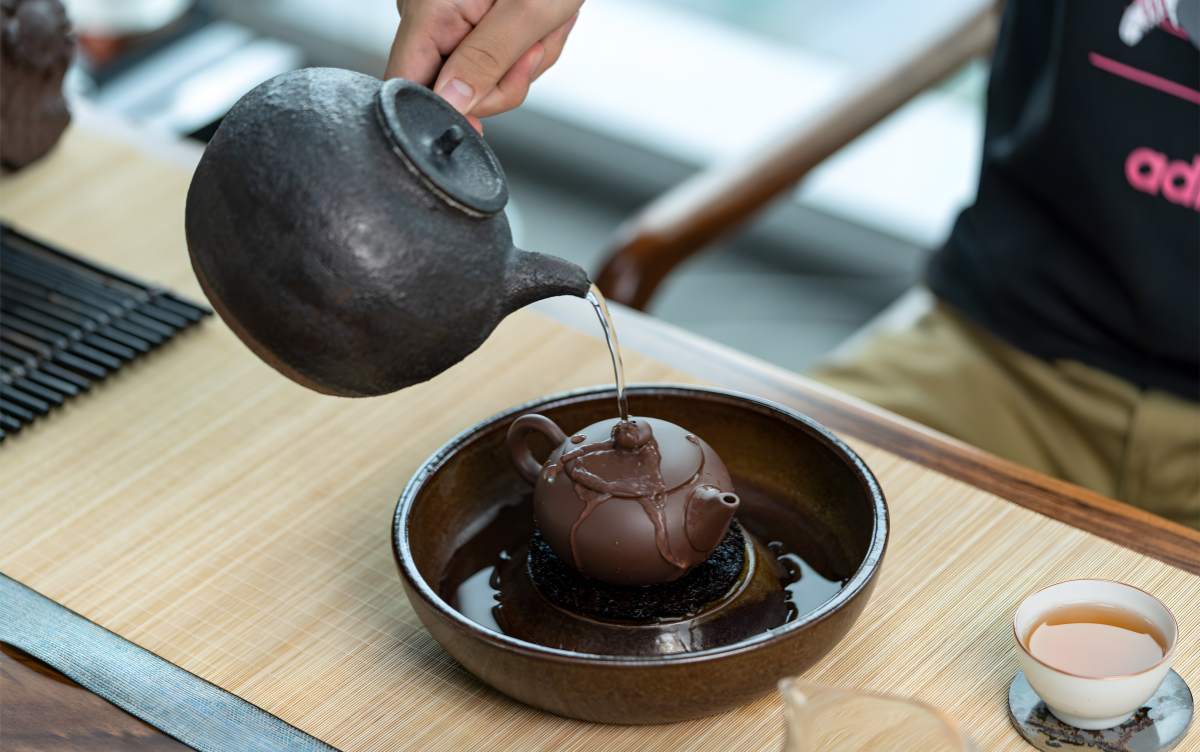
Trivia: A traditional test for a master pot is to fill it, place a thumb on the spout and invert the pot. If the lid of the teapot does not fall and the pot does not leak then the quality is high.
“A teapot should be like a good companion—beautiful, comforting, and inspiring.” —Yixing saying
By combining elaborate decoration with functional engineering, master potters ensure their teapots are not just admired—they are used. Utility reflected in the aesthetics is what the China teapot tradition is known for.
| Feature | Artisan Goal | Why It Matters |
|---|---|---|
| Snug Lid | Preserves aroma, doesn’t leak when pouring | Keeps the tea properly brewing and prevents spills |
| Balanced Handle | Comfort, control to make pouring easy | The tea is less likely to spill, and you’re less likely to hurt yourself in the process |
| Smooth Spout | Clean, precise pour without splashing or gushing | You get more enjoyment, with less mess |
| Even Wall Thickness | Heat retention | Maintains optimal brewing temperature for consistent flavor |
Data Source: Functional and craftsmanship evaluation based on ISO 14507:2018 (Ceramic and glassware standards), technical documentation from the Yixing Ceramics Museum, and scholarly articles on teapot ergonomics and brewing performance indexed by the China National Knowledge Infrastructure (CNKI) and published by the Jingdezhen Ceramic Institute (https://www.iso.org/standard/72398.html, http://www.yxbf.com.cn/, http://www.cnki.net/, http://www.jci.edu.cn/).
Collecting and Caring for Chinese Antique Traditional Tea Pot
A handmade Chinese teapot is a living testimony to the artist who created it. If you own a teapot, it’s a treasure. If you want to collect it, you’ll need to learn to identify it, authenticate it, and take care of it.
What to Look for in a Quality Teapot
“Beautiful and well-made teapots appeal both to collectors and tea drinkers alike,” Scott Adamson, the co-founder of Formocha, says. Specialists explain that teapots are assessed with a combination of artistic elements and common sense among collectors and tea drinkers alike
| Feature | What to Check For |
|---|---|
| Material | Yixing clay (uncoated), real porcelain |
| Lid Fit | Snug, doesn’t rattle, tight seal |
| Spout | Smooth inside, pours cleanly |
| Handle | Comfortable, balanced, no sharp edges |
| Markings | Artist’s seal, clear and precise |
| Surface | No cracks, smooth finish, even color |
Data Source: Evaluation criteria based on ISO 14507:2018 (Ceramic and glassware standards), technical documentation from the Yixing Ceramics Museum, guidance from the Jingdezhen Ceramic Institute, and collector recommendations from the China National Tea Museum (https://www.iso.org/standard/72398.html, http://www.yxbf.com.cn/, http://www.jci.edu.cn/, http://www.teamuseum.cn/).
Fakes and reproductions abound in the market, especially for famous Yixing styles. Buy from reputable dealers or directly from recognized artisans whenever possible. Don’t hesitate to ask for provenance or certificates of authenticity, especially for high-value pieces.
To maintain your teapot’s appearance and value:
Use it regularly: As a general rule, the more you use your teapot, the better it’ll become, both in terms of patina
Avoiding Harsh Chemicals: Instead, simply wash your Tagine in hot water and wipe with a cloth. Soaps will permeate the clay and may leave a residue and will
Be careful: both clay and porcelain will crack or chip if dropped.
Quote:
“A teapot cared for with respect will reward its owner with richer tea and deeper stories.” — Chen Weiming, Jingdezhen master potter
Proper Cleaning and Care
Cleaning a traditional China teapot is not a task that requires arcane rituals, but it does require consistency and diligence:
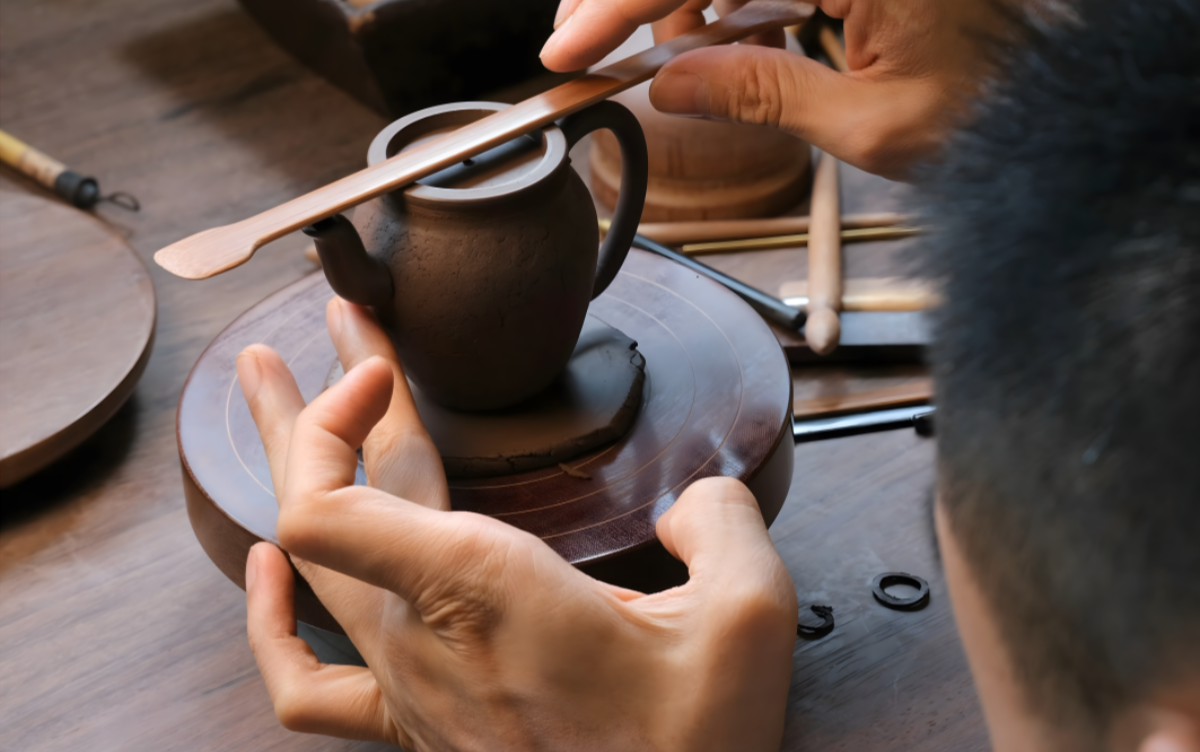
I once read that some people keep logs of every brew made in a prized pot, to note the way the aroma and flavor change over years and even decades of exquisitely saturated ceramic.
Through these practices, you’ll maintain both the functionality and the aesthetics of your traditional China teapot, while forming a connection to a time-honored tradition.
Brewing Tea: The Traditional Way
A well-made China teapot is not only a masterpiece, it is also made to perform. To appreciate the traditional techniques that go into making a China teapot, you need to experience how tea is traditionally brewed.
Best Teas for Yixing and Porcelain Teapots
The choice of tea is closely tied to the type of teapot:
Teapots made from Yixing clay are often recommended for use with Oolong, black, and Pu-erh teas. The tea made from Yixing teapots has special flavors because the walls of the teapot are porous enough to absorb a small amount of the tea with which they are seasoned. For this reason, Yixing teapots
Porcelain teapots are great for brewing green, white, and floral teas; because they are not porous, you can alternate between different types of tea without the vessel accumulating a lingering flavor.
Step-by-Step Guide to Brewing with a China Teapot
The teapot’s contribution to the tea-drinking experience
A good China teapot is not only a (pleasantly styled) receptacle for tea. The carefully selected clay, shape and crafting technique affect the temperature and infusion of the tea leaves, as well as the color, aroma and taste of the
In Chinese tea culture, gongfu cha (the art of brewing tea) is a way of achieving mindfulness and a means of self-cultivation, as well as an expression of hospitality among family and guests. In this spirit of friendship and sharing, the tea pot becomes the very heart of the tea ritual; welcoming friends and strangers alike to take part in a moment of togetherness.
In selecting the proper teapot and in thoughtful brewing, you pay homage not just to the leaves, but to the centuries of fine-tuning held in every hand-crafted pot.
Conclusion: The process of understanding the heritage of symbolic works and the culture of traditional Chinese ceramics Additional conclusion Usually, when we encounter traditional tea utensils, we encounter them as a simple tea product. When we go to a table setting or a tea tasting, we encounter a set of utensils with consistent styles and patterns. Ordinary tea utensils, like Getsho’s work, have value beyond their function for tea drinks in that the more we touch them and experience them, the more we want to know about them. We have tried to understand Jeong Seon’s work and its meaning so far.
These teapots are more than beautiful—they’re built to be used and cherished. From the careful selection of Yixing clay or porcelain, to the hand-forged tools and precise techniques, every step is a testament to the values of craftsmanship and dedication. The meticulous process of shaping, assembling, and firing, combined with unique decorative techniques, ensures that no two teapots are ever truly alike.
The best teapots don’t just brew tea—they deepen relationships, spark conversation, and add joy to even the simplest moments. Their patina tells stories of shared laughter, private reflection, and the slow unfolding of flavor with every pour. And as you brew tea the traditional way, you participate in a centuries-old ritual that honors nature, community, and the quiet pleasures of life.
Why does this craft continue to be relevant today? In a time when mass production and quickly depreciating trends rule the world, traditional China teapot making encourages us to slow down, invest in quality and appreciate the artistic expression that continues to bind us to our past. By supporting artisans, learning how to spot true craftsmanship and caring properly for a true China teapot, we can ensure that this legacy will live on for future generations.
Final Thoughts: The next time you sip tea from a carefully crafted teapot, take time to savor the hands and hearts behind its design. In that humble pot flows a world of tradition, waiting to be explored, one cup at a time.
